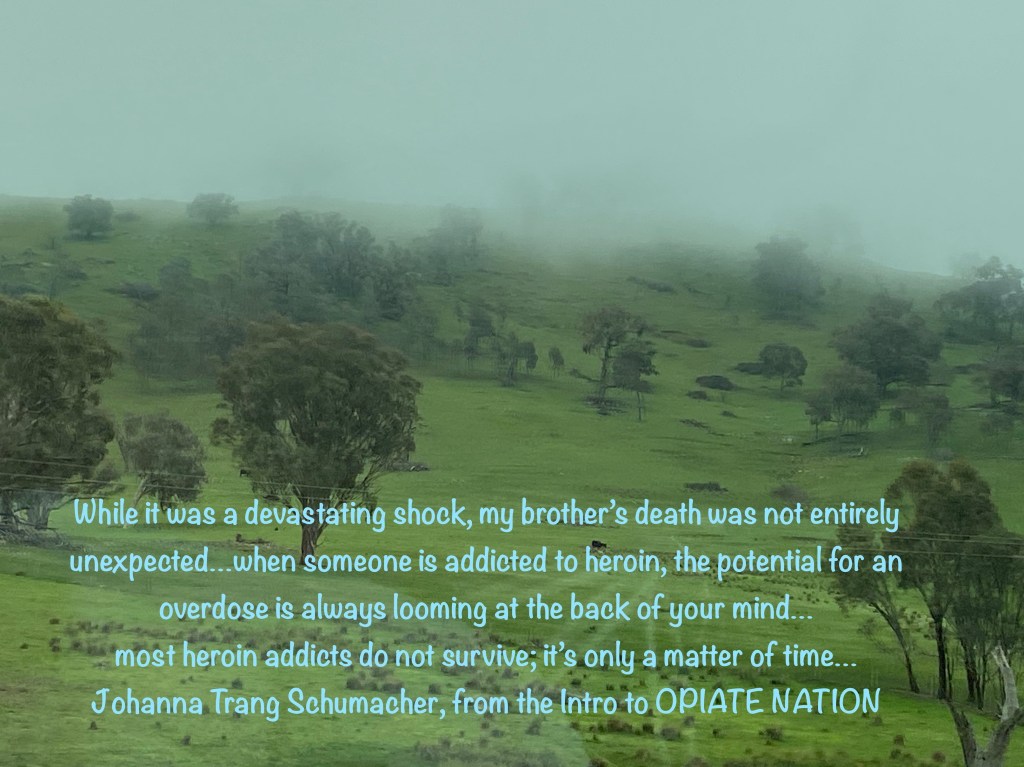In 2017, 16,000 people were killed by gun violence in America: some of them innocent children and young people while they were in school; some while they were just growing up in poor neighborhoods. Our first-world allies are stupefied that we can continue to allow such preventable deaths.
According to the US Centers for Disease Control (CDC) there were 63,632 drug overdose deaths in the US in 2016 – preventable deaths: 172 deaths per day; 42,249 (66.4%) of those deaths were due to opioids. More deaths in one year than those as a result of firearms, homicide, suicide, or motor vehicle crashes. And more deaths in one year than all the deaths from the Korean or Vietnam Wars.
Why are opioids so addictive – and deadly? One area in the brain that opioids directly affect is the amygdala – the pleasure center. For a large percentage of people, once those receptors that regulate emotions have sampled opioid joy, no other experience compares: not sex, food, sights, sounds. And, as Thomas Aquinas said in the 13th century:
“No man can live without joy.”
I watched the truth of Aquinas’ insight in increasing measure with our son over the years as he fought his addiction to heroin. Heroin, the goddess of fleeting joy, always requiring more of her while she offers less pleasure. It was not just the misery of the horrendous withdrawal symptoms every time John Leif would try to get clean again. After they subsided, it was the flatness in his emotions and the dullness of living life without joy. What could replace the euphoria of a heroin high? How long would it take for that pleasure center to normalize – would it ever return to its pre-opioid state?
Eventually we would see the light return to his eyes … this was especially true during the last 8 months of his life. Clean, sober, awake, in touch with life and with those around him. Enjoying the opportunity to see life “through a child’s eyes” as he played Legos with his 3 and 5 year old nieces: the real John Leif, alive and participating in the joy that life without addiction can offer. But, even this period of recovery ended – as did his life.
There is another part of the brain that opioids directly affect: the nucleus accumbens, which is the addiction center. Opioids change the neuroplasticity in this region so the brain physically craves them. Scientists are not sure how long it takes to rewire the addiction center because even after periods of sobriety, it does not return to normal, and thus the cravings continue. For most people, the cravings are irresistible and the easy solution is to return to using. For some, a strong impetus for freedom along with a spiritual renewal that gives them the strength to do the hard work of recovery with adherence to a 12-step program, is a life-saver.
For a recovery program to actually bring long-term changes to the brain, anything less than 6 months will not work. And the current thought by many professionals now is that recovery programs for opioid addiction should be 6 mo-1year and include a strict sober living program for a year following. Don’t let costs deter you. The Salvation Army has very solid alcohol and drug rehab/recovery programs in many cities and they are free:
https://www.salvationarmyusa.org/usn/combat-addiction/
If you are struggling with addiction and feel trapped – or if you know someone who is – please do not let another day pass without seeking help. It is urgent – it is more than important – it is essential – it is life and death – your’s or someone you love.



